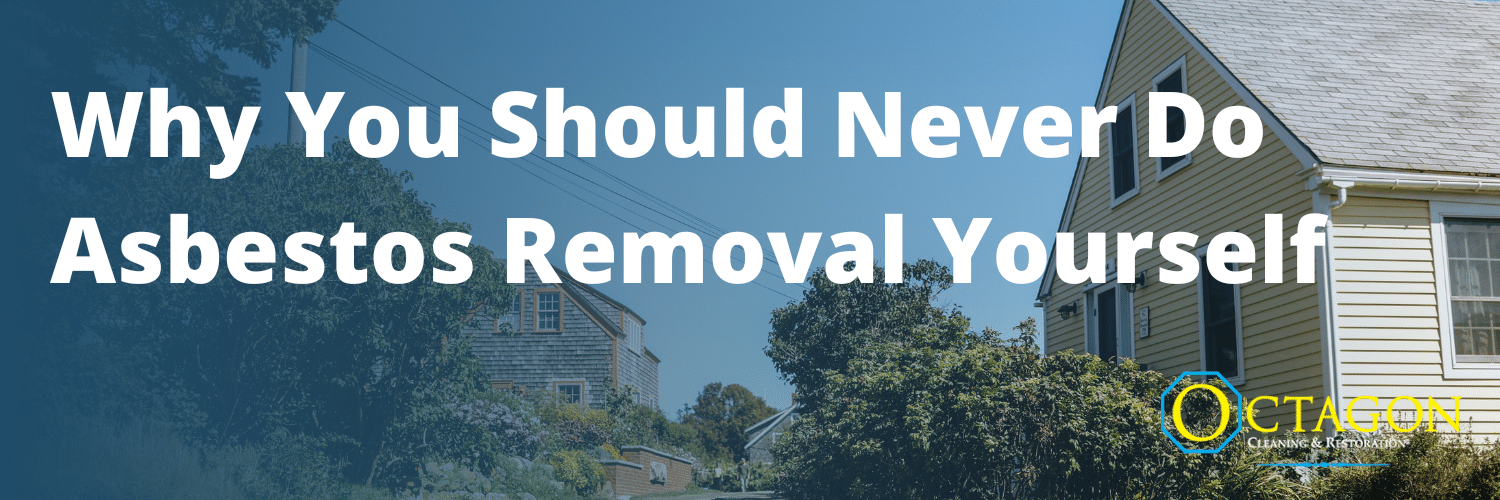
Homeowners should never attempt asbestos removal on their own, if for any reason, due to the significant health risks associated with exposure to the material. Not only are the risks to you and your family very real, but health risks aside, asbestos removal from any home, dwelling, property, or structure is subject to specific protocols and regulations that, if ignored, have legal consequences. If you own an older home from, say, the 1940s or 1950s, and you’re considering a DIY renovation project, you should first seek professional help from a qualified asbestos inspector to conduct a thorough inspection of your property.
What is asbestos?
Asbestos is the name of a group of six naturally occurring mineral types that were once widely used as a building material. Asbestos, a material resistant to heat, fire, and electricity, has been used in construction, shipbuilding, and manufacturing for a long time. Unfortunately, asbestos has one considerable flaw. The material poses serious health risks when its fibers are inhaled or ingested. As a result, asbestos exposure can cause severe respiratory diseases like lung cancer, mesothelioma, asbestosis, and more.
Asbestos Use in Building Houses
Asbestos was used extensively in building houses from the early 20th century until the late 1970s, with the peak construction use period from the 1940s to the 1970s. During this time, asbestos-containing materials were commonly used in various parts of residential buildings for insulation, fireproofing, roofing, siding, flooring, and more. Its affordability, durability, fire resistance, and insulating properties made asbestos a favored material for building and construction. Only when the health risks associated with asbestos exposure became widely known did its use in construction become stricter, leading to a decline as a building material for residential housing.
What You Need to Know
If your home was built before the 1980s, it’s highly likely that it contained or still contains some asbestos material. The good news is that if the material has been left undisturbed and undamaged, it poses minimal risk. However, during home renovation, especially DIY projects, once asbestos materials are disturbed or begin to disintegrate or become friable, there’s a likely risk to homeowners and anyone helping them, along with their family members, of asbestos exposure. If asbestos materials are not removed properly, they have the potential to create a greater health risk than leaving it undisturbed.
5 Reasons Why Homeowners Should Not Attempt Asbestos Removal
Contamination
As mentioned, disturbing materials containing asbestos within your house release harmful fibers into the air that, if inhaled or ingested, can have serious health consequences. Once a DIY project is underway and the fibers become airborne, the risk of contamination of the entire home is possible. The improper removal of asbestos can lead to a higher risk of exposure for occupants, including family members and pets.
Challenges
To begin with, asbestos removal requires the necessary equipment, tools, and protective gear to safely remove asbestos-containing materials without risking exposure. Once removed, asbestos-containing materials require special containers that adhere to specific guidelines for transportation and disposal.
Legal Regulations
Asbestos removal and its proper disposal are strictly regulated by local, state, and federal laws to ensure the environment’s and individuals’ safety. Government agencies set regulations and guidelines for asbestos removal to ensure it is properly handled and disposed of by professionals certified in asbestos removal. In fact, under the law, attempting to remove asbestos yourself is illegal if it does not follow asbestos abatement protocol. Homeowners unaware of or failing to comply with regulations will be subject to fines.
Hidden Asbestos
Asbestos may be present in expected areas of older homes, like insulation, floor tiles, siding, or certain roofing materials. However, without proper training and equipment, homeowners may not recognize other materials containing asbestos. Asbestos materials were also used in drywall and plaster, window sill putty, pipe and furnace insulation and duct tape, undersheeting, outlet switches, acoustic ceiling tiles, recessed lighting fixtures, and more.
Identifying Asbestos
At the very least, identifying asbestos materials in an older house can be challenging. Different types of asbestos were used to manufacture different asbestos-containing materials. For instance, serpentine asbestos fibers are long and curly, whereas the shape of amphibole asbestos is characterized by its needle-shaped fibers. The colors of asbestos differ, too. Those materials once off-white or a shade of brown, blue, or green have likely faded to various grayish hues.
The first step in identifying asbestos materials is to know where they might be. Look for materials that were commonly made with asbestos. The main culprits include old vinyl floor tiles, types of insulation, roofing materials, siding, and textured paints. Keep in mind that, though knowing where asbestos might be commonly found in an older house, visual inspection alone is not sufficient to confirm the presence of asbestos. Asbestos fibers are microscopic and cannot be identified with the naked eye. Instead, samples need to be laboratory tested.
Seek the Help of Professionals at Octagon Cleaning & Restoration
Identifying asbestos and asbestos removal requires specialized knowledge, training, and expertise to ensure safe handling and disposal. Octagon Cleaning & Restoration provides asbestos removal services for residential properties, conducted by trained and accredited asbestos professionals. Our team of asbestos removal specialists has undergone the required training and certification program through an accredited EPA Model Accreditation Plan (MAP). Our team of professionals is thoroughly trained in asbestos removal protocols. We know what to look for to make your home a safe place to live. For a free estimate or more information, contact Octagon Cleaning & Restoration.
